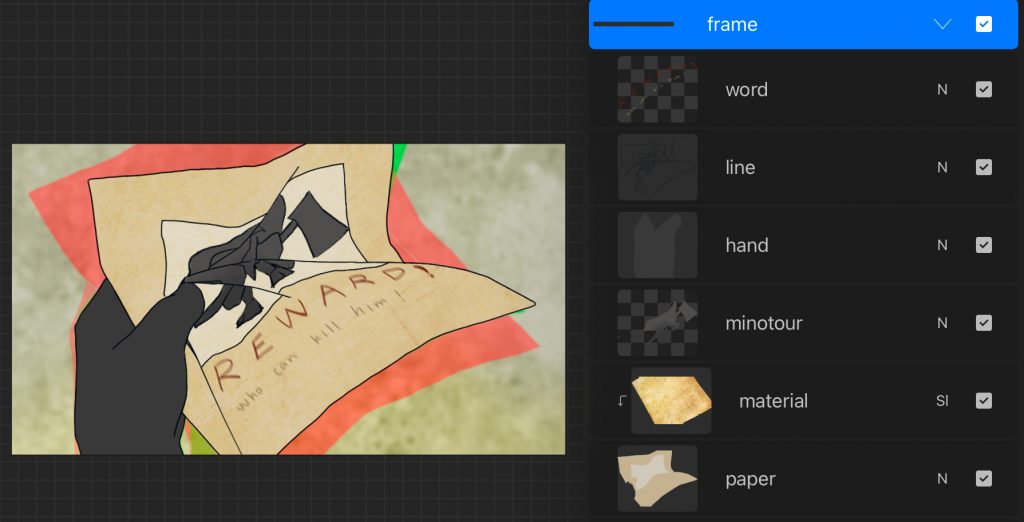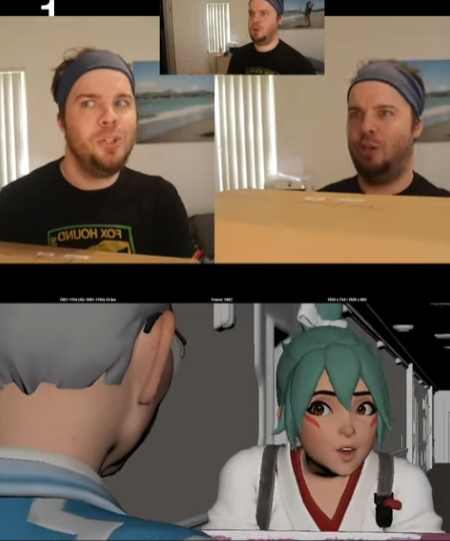As a unique form of art, animation often requires artists to carefully observe the details of life in order to achieve precise body mechanics and smooth movement. In character animation, reference videos are an important tool. They help animators capture real movements and better understand weight, timing, and expressions. Last semester, I worked on an independent animation project. To make the animation more natural and believable, I decided to record my own reference video. This report will review my workflow—from shooting the reference video to turning it into animation—and summarize the lessons I learned, the challenges I faced, and my overall experience.
In my animation project Unexpected, the opening shot features the protagonist confidently holding and gripping the wanted poster. This shot needs to show the hand’s movement and effort in close-up, so it’s important to focus on smoothness and aesthetics. To better observe the muscle movement and hand structure during the action, reference videos are crucial. For this, I filmed some reference videos using my own hand. I tried different angles, distances, and speeds, and found that showing the process of the paper being tightly gripped for a longer time made the animation clearer. So I ultimately chose this video as the final version.
After this, I first analyzed the key frames in the action and extracted them to get the general animation rhythm. This also helped a lot with drawing the hand structure. Next, based on the animation’s drawing style, I stylized the reference video. This resulted in the rough animatic.
However, the smoothness and details of the key frames were very rough, so I needed to add in-between frames based on these key frames. First, from the reference video, it’s clear that the paper should be folded twice before being tightly gripped, so I chose to complete this part of the animation while adding the in-between frames. Additionally, the paper features an image of a Minotaur and some text, so when refining the paper’s folding, these elements must follow a logical motion pattern to make the entire animation segment look smooth and natural. This was a very patience-demanding part. I repeatedly observed the reference video, determined the movement trends of each element (such as the paper, text, and images), and organized the rough animatic into line art, then added color. For each frame, I divided it into six layers, which I refined and colored separately. For some of the middle frames, I applied Gaussian blur to simulate the details as perceived by the human eye.

Next, through continuous clean-up and coloring, I created a basic animation clip. Building on this, I analyzed the movement rhythm of the reference video and noticed that the speed of the two paper folds was different—the first fold was slower than the second one. So I adjusted the duration of these frames, which not only achieved a better rhythm but also made the clip look more natural.
By referring to and learning from the reference video, I created the final version of the animation clip, and I am mostly satisfied with the result. The reference video helped me solve the challenge of hand movement patterns, improved my work efficiency, and made the animation look better. However, there are still some shortcomings and areas for improvement that I need to reflect on.
First, maybe due to the limited time for this project, the final colors and lines still look a bit simple. If I had more time to refine the details, the result might have been better. Second, I think this reference video is not very helpful for showing a more “2D” and exaggerated animation style. In animation, reference videos are often used for facial expressions and body movements. When handling these, adding proper exaggeration and stylization can make the animation more engaging, just like how expressions and actions are handled in this video.

As an animator, I believe that while reference videos are useful, we should not rely on them too much. Instead, we should learn from them while also thinking critically, improving the animation process, and continuously enhancing the quality of our work.
Reference:
